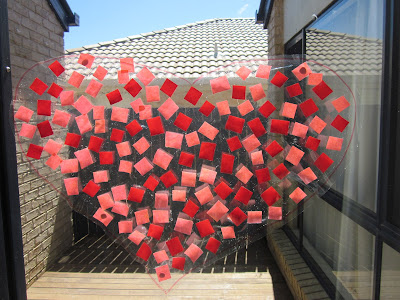
Finger painting is fun for kids of all ages. These recipes are easy to make and require few materials. They will provide lots of art activities for your toddler.These recipes would work well for a play date or a rainy day activity. Finger painting is a wonderful way to enhance fine motor skills. You can also use finger painting activities to help teach concepts such as shapes, colours, or numbers.
Basic Finger Paint
This finger paint recipe is great for all ages, even young toddlers who still put things in their mouths. Mix together one cup flour and one and a half teaspoons of salt. Add one cup of water and mix together. Add your choice of food coloring. It will have a gritty texture.
Use this finger paint for just about any activity. It is great for little ones just to get the feel of the paint on their hands. Allow students to experiment with it and have them put their hand prints on the paper, or have them paint circles all over the paper.
Laundry Soap Finger Paint
This recipe is a fun one to use. It is probably better suited for older toddlers and preschoolers. Make sure children keep their hands away from their eyes. Pour laundry detergent into a small amount of water. Mix using an electric mixer or egg beater. It will have a thick consistency. Add any color tempera paint and mix well. This finger paint recipe is great to use on finger paint paper because of its thicker consistency.
Pudding Finger Paint
This is a fun option for all ages, even young toddlers. It is safe to eat. Make pudding according to package directions. If you want different colors, make vanilla and mix food coloring in.
Spoon the pudding out in bowls or pie tins and allow your students to create their pudding pictures. One fun activity to do with pudding paint is to have children paint their pictures on wax paper. While it is still wet, take a piece of Manila paper and press it on the wax paper.
Ready to Use Finger Paint
Shaving cream makes a wonderful finger paint for older toddlers and preschoolers. Just make sure no one ingests any. Simply squeeze out some shaving cream onto a table or desk top. Allow students to use their hands and create pictures with it. An added bonus to using shaving cream as finger paint is that it cleans the tables and desk tops.
Mix It Up
These mix in ideas are an excellent opportunity to teach about textures. For a rough texture, mix uncooked rice into your finger paint. For a smooth, slippery texture, mix in dish washing liquid soap. For a grainy texture, mix in coffee grounds. For a sticky texture, mix in corn syrup. The corn syrup will also have a super shiny finish when it dries.
Jelly Crystals
Place some jelly crystals into a container and mix it with some water. The mixture is around 1/3 water and 2/3 Jelly Crystals. But it’s really all up to you. This works well as a wash over a picture drawn with pastels first.
3 cups water, 1 cup cornstarch, food coloring
In a medium saucepan, bring water to a boil. Dissolve cornstarch in a separate bowl with water. Remove boiling water from heat and add cornstarch mixture. Return to heat, stirring constantly. Boil until the mixture is clear and thick (about 1 minute). Remove from heat.
As the mixture is cooling, divide into separate bowls and add food coloring. Let the children carefully mix in the coloring.
Salt and Flour Finger Paint
2 c. flour
2 tsp. salt
3 c. cold water
2 c. hot water
Food coloring
Add the salt to the flour in a saucepan. Pour in cold water gradually and beat the mixture with an egg beater until smooth. Add the hot water and boil the mixture until it becomes glossy. Beat it until it is smooth. Mix in food coloring.
Soap Powder Finger Paint Recipe with Talcum
Powder
1/2 Cup liquid starch
3 Cups water
1/4 Cup soap powder (not detergent)
1/4 Cup talcum powder
powdered paint
Mix soap and water in a saucepan, then add starch. Stir until soap powder is dissolved. Bring to a boil and cook until clear. Remove from heat and add paint and talcum. Using a mixer beat until it is smooth and foamy. Store air tight in refrigerator.
Rice Finger Paint Recipe
Mix baby rice cereal with water and food colouring or use cooked cereals with colouring.
Sweetened Condensed Milk Finger Paint
Sweetened condensed milk
Food coloring or brightly colored fruit juice
Pour a small amount of sweetened condensed milk into several small bowls. Mix in a few drops of food coloring in each bowl to create a variety of colors. Help your toddler use the coloured sweetened condensed milk to paint on newspaper, butcher paper, or craft paper.
Alternatives to Food Colouring
Some parents may prefer to avoid food coloring because their toddler is allergic to it or because they want to use more natural ingredients.
Red - cherry juice, raspberry juice, cranberry juice
Blue - blueberry juice
Yellow - dried turmeric
Health food stores may carry vegetable based food coloring.








































